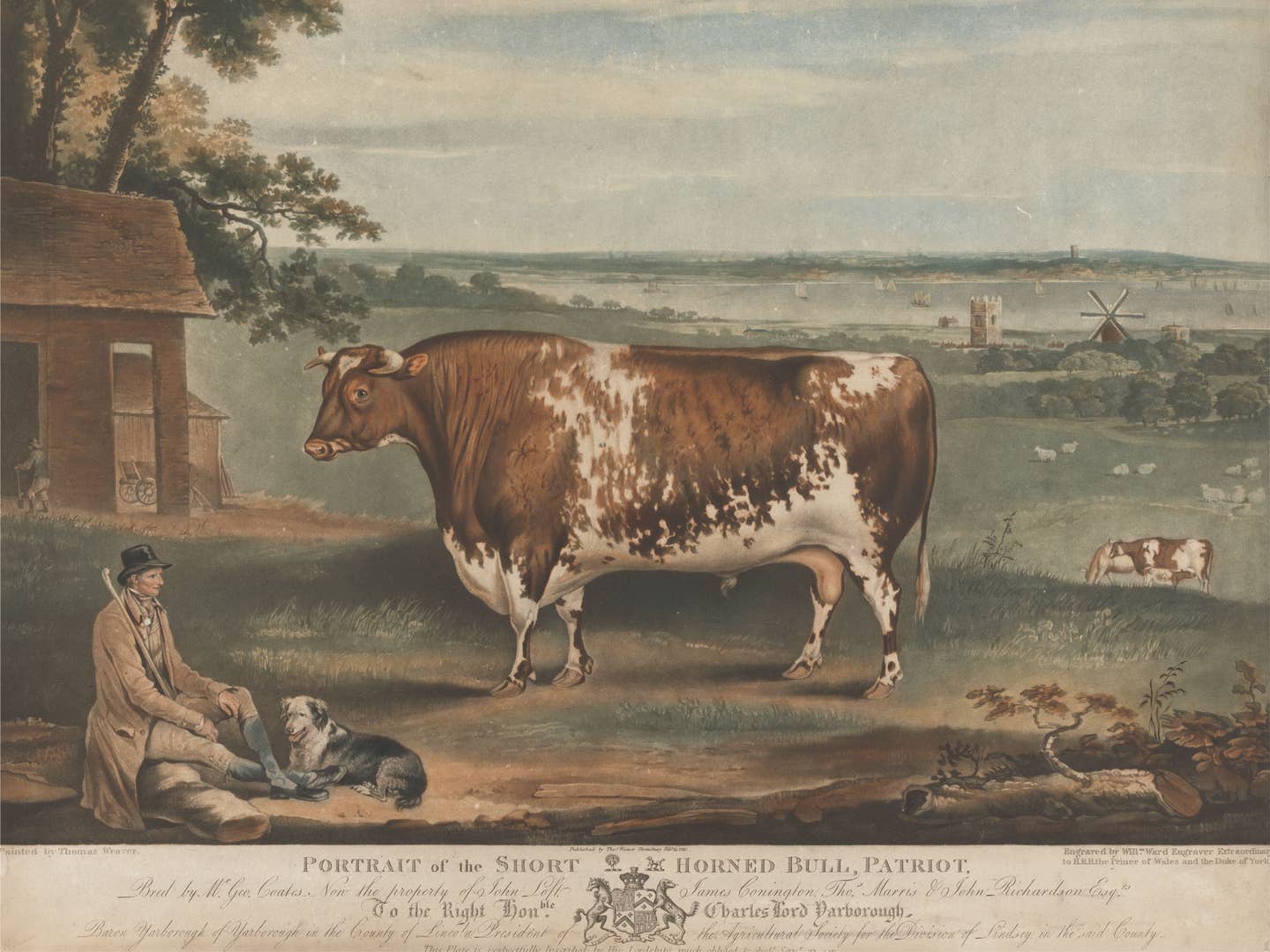
These Livestock Portraits Were the Ultimate Displays of Wealth in 19th-Century Britain
The exaggerated paintings of landowners with their oversized cows, pigs, and sheep were the Instagram status-symbol photos of yesteryear
A smiling selfie with a brand new set of wheels, the perfectly-composed shot from a tropical resort getaway, faux-candid snaps on a private jet: these are the digital status symbols we know today. But according to Gastro Obscura, in 19th-century Britain, it was all about exaggerated paintings of fat cows, pigs, and sheep.
Wealthy estate-owning farmers in the 1800s loved to showcase their corpulent cattle, which, admittedly, were large than ever due to new breeding techniques and practices. To do so, they would commission rustic paintings of themselves standing proudly beside the animals—depicted in physically-impossible ways that would highlight their elite owners' ability to breed and raise prize-worthy livestock. Cows were massive, angular shapes sitting on tiny legs, while pigs were 10-foot tall footballs towering above barnyards.
bröther may i have some öats pic.twitter.com/je2HIEaPpB
— ????????????? ????? ? (@markyannna) October 11, 2016
Gastro Obscura explains that the part-art, part-advertisement paintings were part of a larger national push towards prosperity: "The average weight of British cows increased by a third from 1710 to 1795." In addition to leisurely breeding, there were entire studies on "improvement" methods used by the nobility, such as stuffing the animals with oil cakes or turnips.
It's clear this phenomenon was quite serious to these high-class farmers, but today they just come across as humorous. One of these paintings, depicting pigs grazing on oats, has even become a viral meme in the past year. On a more solemn note, however, they also seem to warn of a future where a bigger-is-better mentality is celebrated when it comes to our food and livestock—even if that means using questionable "improvement methods."
h/t Gastro Obscura
Keep Reading
Continue to Next Story










